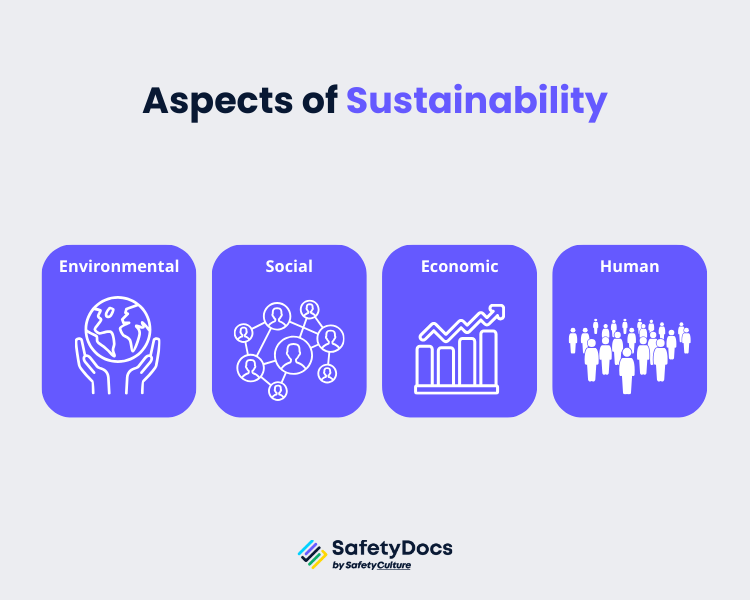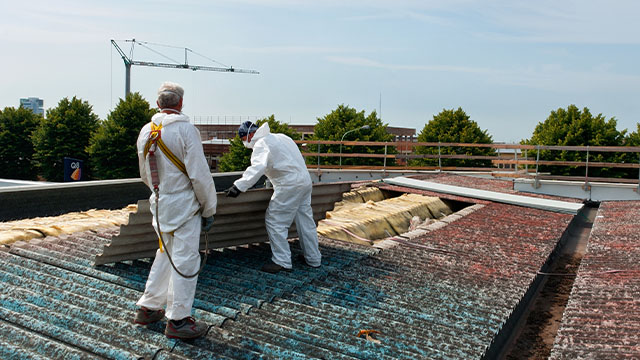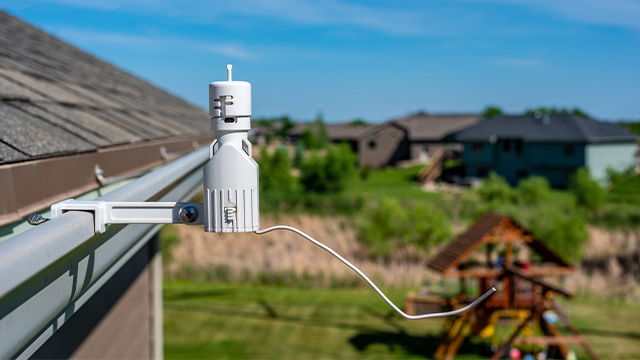As the world grapples with environmental challenges, industries increasingly recognise the need to further integrate sustainability and eco-conscious practices into all facets of operations. This is why sustainable work practices have been recognised in Australia for several decades. The minerals industry, for example, developed its first Code of Environmental Practice in 1997, demonstrating a commitment to responsible and sustainable mining practices.
These work practices go beyond just reducing carbon emissions and implementing renewable energy solutions. It also includes the use of environmentally friendly safety equipment. This blog delves into the emerging trend of eco-friendly safety equipment, examining its significant impact on workplace safety and the environment.
Environmental Challenges in Australian Workplaces
Australia faces numerous environmental challenges, including climate change, biodiversity loss, air and water pollution, and waste management. These challenges extend to the workplace, where factors like extreme weather events and resource scarcity can disrupt regular operations. Businesses must acknowledge and address these challenges to ensure a resilient and sustainable future.
- Climate Change: Australia is one of the top greenhouse gas emitters in the world on a per capita basis, particularly from the burning of coal, contributing to global warming and extreme weather events. This affects workplaces through heat stress, bushfires, floods, and other natural disasters.
- Poor Air Quality and Ventilation: The mining, agriculture, and manufacturing industries are three of the largest contributors to air pollution in Australia. Poor air quality can lead to respiratory problems, allergies, and other health issues for workers.
- Asbestos: Despite being banned in Australia, asbestos contamination continues to be an ongoing threat to public health, particularly in older buildings.
- Waste Management: Australia generates large amounts of waste, with much of it ending up in landfills or polluting the environment. This not only contributes to greenhouse gas emissions but also poses risks to human health through exposure to toxic substances.
What are Sustainable Work Practices
To combat these environmental and health hazards, sustainable work practices have become increasingly important in Australia. These are practices that aim to minimise the negative impacts of work operations on the environment and promote social responsibility while still maintaining economic viability.

Aspects of Sustainability
The aspects of a sustainable environment are typically categorised into three or four pillars: environmental, social, economic, and sometimes human.
- Environmental: This pillar focuses on minimising the negative impacts of work activities on the environment. This involves preserving and protecting the natural environment, including factors such as air, water, and soil pollution, climate change, and the conservation of natural resources like water, soil, forests, and wildlife
- Social: The social aspect of sustainability involves promoting fair and safe working conditions for employees, as well as engaging with local communities and supporting diversity and inclusion.
- Economic: The economic pillar looks at how eco-conscious work practices can lead to long-term economic stability. This includes reducing costs through efficient resource use, increasing productivity through innovation, and creating new job opportunities in green industries.
- Human: Some also include a fourth pillar— human sustainability, which considers the health and well-being of individuals both within and outside of the workplace. This can involve initiatives such as promoting work-life balance, providing mental health.

Examples of Sustainable Workplace Practices
Here are some examples of sustainable workplace practices that companies can implement to encourage employees and companies promote sustainability:
Renewable Energy Sources
Companies can reduce their carbon footprint and save money on energy costs by implementing energy-efficient practices such as using LED lighting, investing in renewable energy sources, and utilising smart building technology.
Waste Reduction Strategies
By using responsible waste disposal and implementing a waste reduction system, companies can decrease the amount of waste they produce and divert materials from landfills. This can include initiatives like composting food waste, recycling paper and plastic products, and donating excess materials to local organisations.
Sustainable Transportation
Encouraging employees to use sustainable transportation options such as public transit or carpooling not only reduces emissions but also promotes healthier lifestyles for employees.
Inclusive Hiring Practices
Diversity and inclusivity are crucial for a sustainable future. Companies can promote diversity by implementing inclusive hiring practices, providing equal opportunities for all individuals, and creating a welcoming work environment.
Supply Chain Management
Partnering with suppliers who share similar values and have sustainable practices is vital for reducing the environmental impact of a company's supply chain. This can include using renewable materials, reducing waste, and implementing fair labour and environmental practices throughout.
Regular Audits and Assessments
Regular audits and assessments can help companies identify areas for improvement in their sustainability efforts. This can include tracking energy usage, waste management practices, and carbon emissions to set goals for reducing their environmental impact.
Workplace Sustainability Initiatives in Australia
To promote the sample practices mentioned above and create a more sustainable workplace, Australia has implemented various initiatives to encourage companies to take action.
These include the following:
Environmental Sustainability Reporting Standards
As of July 1, 2024, Australian businesses may need to adapt to new sustainability reporting standards, marking a significant shift in how companies disclose their environmental and social impacts. This initiative, proposed by the Australian Accounting Standards Board (AASB), seeks to introduce a standardised framework for sustainability reporting, particularly focusing on climate-related financial information.
The proposed standards, including ASRS 1 and ASRS 2, are designed to align with global practices while addressing the unique aspects of the Australian corporate landscape. These standards aim to increase transparency and encourage companies to take a more active role in monitoring and reporting their contributions to sustainability.
The AASB's proposal suggests a phased implementation strategy, categorising companies based on specific criteria such as size and revenue. This approach intends to gradually integrate these reporting requirements across various sectors, starting with the largest entities that have a more significant impact.
It's important to note that these changes are still in the proposal stage, with the final details subject to confirmation following the consultation process. Businesses and stakeholders should stay informed on these developments, as they could have far-reaching implications for corporate governance and sustainability practices in Australia.
For professionals and businesses aiming to stay ahead, understanding these proposed standards and preparing for their potential implementation will be crucial. As these discussions evolve, staying engaged with the latest updates will ensure that your business is not only compliant but also contributing positively to a sustainable future.
Green Star Certification
The Green Star Certification, established by the Green Building Council of Australia (GBCA) in 2003, is a globally recognised rating system for buildings and communities in Australia. It sets the benchmark for creating healthy, resilient, and environmentally friendly spaces. This certification serves as a means to validate the environmental and social impacts of a project, with a rating scale ranging from 1 to 6 stars. Achieving 6 stars signifies a position of global leadership in sustainability.
National Carbon Offset Standard
The Australian Government implemented the National Carbon Offset Standard (NCOS) on July 1, 2010. This standard serves as a valuable resource for organisations and products striving to achieve carbon neutrality. Through voluntary auditing and offsetting of their carbon footprint, they can genuinely contribute to a sustainable future.
Business Energy Audits
Businesses are urged to conduct regular energy audits to assess energy consumption or power usage, identify areas for reduction, and compare energy costs with other providers for cost and environmental savings. To ensure compliance with Australian Standards, energy audits must align with the respective guidelines. For commercial buildings, adhere to AS/NZS 3598.1:2014; for industrial and related activities, refer to AS/NZS 3598.2:2014; and for transport-related activities, consult AS/NZS 3598.3:2014.
Sustainable Procurement
This emphasises the use of environmentally friendly office products and creates a sustainable procurement strategy to support the use of eco-friendly materials and products. This includes implementing a green purchasing policy that outlines the criteria for selecting products and services with lower environmental impact, such as recycled content, energy efficiency, and biodegradability.

The Role of Eco-Friendly Safety Equipment
Implementing workplace sustainable practices needs the cooperation of both employers and employees. Another aspect of this is the use of eco-friendly safety equipment. Eco-friendly safety equipment refers to products that are designed with sustainability in mind, from their production process to their use and disposal. This can include anything from energy-efficient lighting to biodegradable personal protective equipment (PPE).
Types of Environment-friendly Safety Equipment
- Halotron Fire Extinguisher: Halotron fire extinguishers are designed to put out Class A, B, and C fires without being very damaging to the environment. They have a lower ozone depletion potential compared to older fire suppressants like halons, making them more environmentally responsible.
- Reusable or Disposable Personal Protective Equipment (PPE): Facilities can choose to use reusable or disposable supplies for cleaning tasks, and PPE should be used to ensure the safety of cleaning staff and protect the environment.
- Sustainable PPE: These include biodegradable and compostable gloves, aprons, and other safety gear made from environmentally friendly materials such as bamboo or cornstarch. These materials are not only safer for the environment but also reduce waste and pollution.
- Non-Toxic Cleaning Products: Traditional cleaning products contain harmful chemicals that can harm both human health and the environment. Instead, facilities can opt for non-toxic and eco-friendly cleaning solutions that are just as effective but without a negative impact on the environment.
- Eco-Friendly Gardening Equipment: Gardening equipment that meets Australian standards and has safety devices, such as safety guards, can help reduce the environmental impact of gardening.
- Sustainable Building Materials: Using sustainable building materials, such as recycled steel, bamboo, and reclaimed wood, can help reduce the environmental impact of construction and promote sustainability in the building industry.
- Energy-Efficient Appliances: Switching to energy-efficient appliances, such as refrigerators, washing machines, and dishwashers, can significantly reduce energy consumption and save money on utility bills. Check the item out for the ENERGY STAR label when purchasing new appliances.
- Renewable Energy Sources: Facilities can also consider incorporating renewable energy sources into their operations, such as solar panels or wind turbines. This not only reduces dependence on fossil fuels but also helps in reducing carbon emissions.
- Water Conservation Methods: Implementing water conservation methods, such as installing low-flow fixtures and rainwater harvesting systems, can help facilities conserve water and reduce their overall impact on the environment.
Advantages for workers and the environment
Using these types of sustainable safety equipment in eco eco-friendly workplaces has numerous benefits for both workers and the environment. Some of these advantages include:
- Improved Safety: By incorporating sustainable safety equipment into their operations, facilities can ensure a safer working environment for their employees.
- Cost Savings: Many sustainable safety equipment options are designed to be more cost-effective in the long run, such as LED lighting that uses less energy and lasts longer than traditional bulbs.
- Employee Satisfaction: By implementing sustainable practices, facilities can show their commitment to environmental responsibility, which can lead to increased employee satisfaction and morale.
- Compliance with Regulations: As sustainability becomes a greater focus in society, there are likely to be stricter regulations surrounding environmental impact and safety measures.
- Reputation and Brand Image: Companies that prioritise sustainability can gain a positive reputation and brand image in the eyes of consumers. This is especially important for businesses that rely on consumer trust, such as those in the food or healthcare industries.
- Long-Term Viability: Sustainable safety practices benefit the present and secure the future. Businesses can ensure their long-term viability and success by reducing risks and hazards.
- Social Responsibility: Lastly, using sustainable safety equipment and practices demonstrates a company's commitment to being socially responsible.
Measuring the Effectiveness of Your Sustainable Efforts
How do you measure the effectiveness of your sustainable efforts? Here are a few ways to track and evaluate your progress:
Environmental Metrics
Organisations can assess their environmental impact by tracking factors such as resource consumption, waste generation, energy usage, water consumption, and greenhouse gas emissions. To measure these metrics, companies can set targets and track their progress using tools such as environmental management systems and sustainability reporting frameworks.
Economic Metrics
Economic metrics assess the financial aspects of sustainability, including profitability, cost savings, return on investment, and value creation. Measuring these metrics allows organisations to identify opportunities for cost reduction through waste reduction and energy efficiency. Use a combination of financial reports, profit and loss statements, and budgeting tools to track these metrics.
Sustainability Indicators and Reports
Sustainability indicators and reports have grown in popularity across all sectors of society, although their impact on changing policies remains quite small. The main indicators can include measuring the carbon footprint, indirect emissions, water usage, and waste generation.
Sustainable Procurement Metrics
Sustainable procurement can mean a lot of things, from measuring CO2 footprint to mitigating modern slavery. Organisations should consider the total impact on the economy, the environment, and society, not only relating to what is relevant for the company's internal stakeholders.
Assessment Tools
There are comprehensive assessment tools available that cover key maturity areas, allowing organisations to see their score and identify areas for improvement. Safety documents such as risk assessments and method statements can be incorporated to help you measure the effectiveness of your sustainable workplace practices.
SafetyDocs for a Sustainable Workplace
Your eco-conscious safety efforts can be made even stronger with the use of safety documents.SafetyDocs by SafetyCulture is Australia’s leading provider of workplace health and safety management systems. We can help you manage all aspects of your eco-friendly safety practices. This includes a wide range of documents such as risk assessments, incident reporting, compliance checks and more. It also allows you to easily track and monitor your progress in implementing sustainable business practices.
Some of our most popular safety documents for a sustainable workplace include:
- Environmental Management Plans
- Environmental Sustainable Procurement Policy
- Environmental Management Policy
- Environmental Incident and Corrective Action Report Form
Furthermore, we offer a variety of templates and forms for conducting environmental audits, risk assessments, and waste management plans. Our goal is to make it easy for businesses to comply with regulations and go above and beyond in their sustainability efforts.
Contact us today to learn more about how SafetyDocs can help your business become more environmentally responsible and sustainable.
Our team of experts is dedicated to providing accurate and informative content. Craig Cruickshank, our senior HSEQ advisor at SafetyDocs by SafetyCulture has reviewed this blog post to ensure the highest level of quality.
Learn more about Craig's work on LinkedIn for more industry insights.
Available for instant download and supplied in fully editable MS Word format for use in your business.
Please note that the above information is provided as a comment only and should not be relied on as professional, legal or financial advice.
Share This Article
